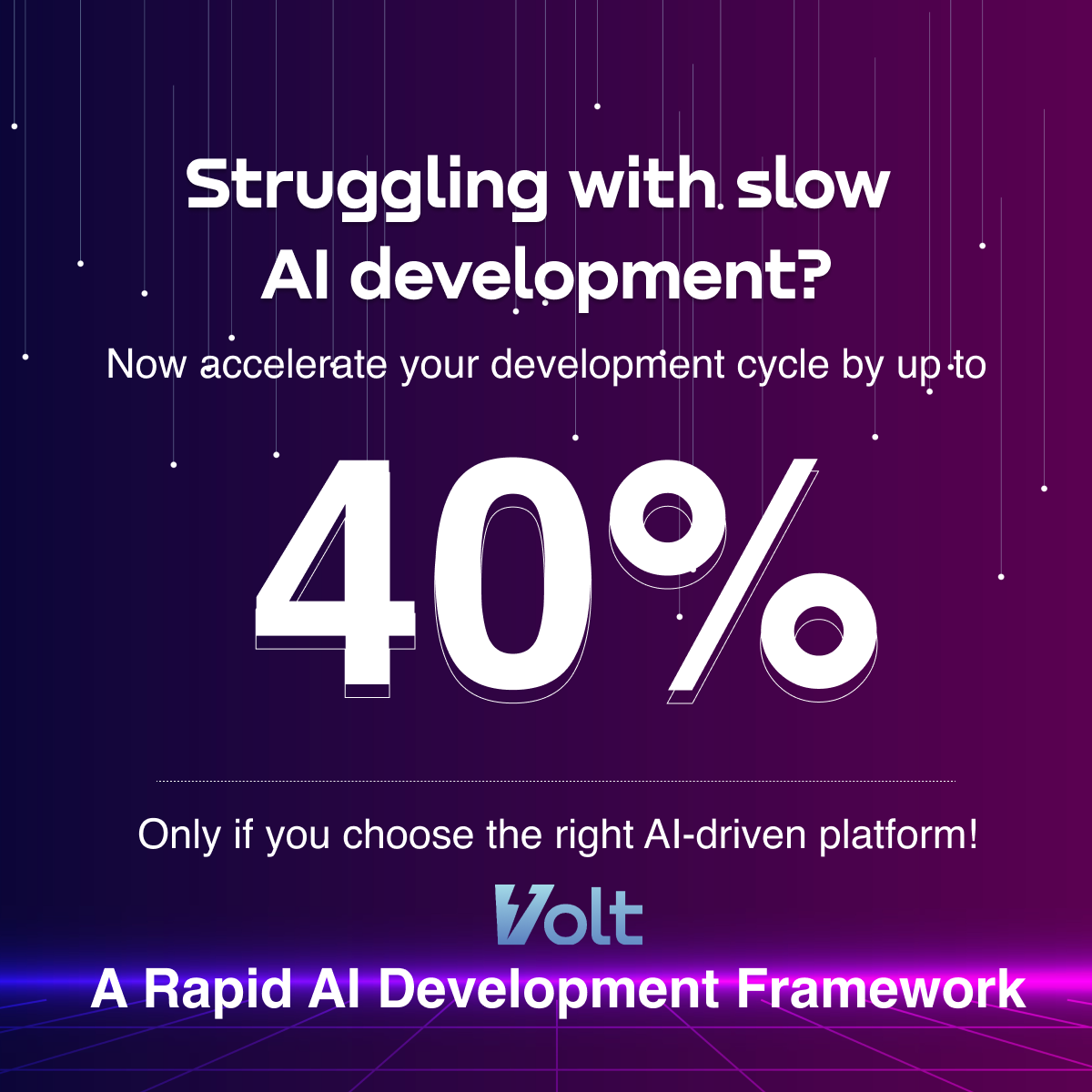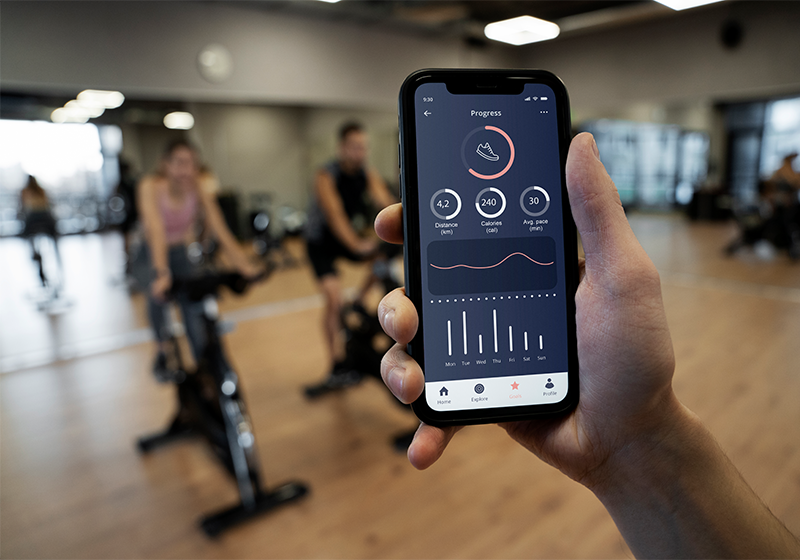AI
The Role of AI/ML in Wellness App Development like Calm
 Updated 02 Apr 2025
Updated 02 Apr 2025

The meditation apps show rising market growth due to people everywhere paying more attention to their mental well-being. Business reports show the worldwide meditation management app market value will reach $473.47 million by 2033 at a 9% compound annual growth rate (CAGR) from its current $200 million value in 2023. The market is growing vigorously due to rising mindfulness practice knowledge among people and easier access to digital apps.
The popular mobile apps Calm and Headspace have been the leading forces behind this market growth. The market values proved profitable for Calm when it reached a $1 billion valuation in 2019. The Headspace platform earned $195 million in 2023 revenue from its 2.8 million subscribers, who downloaded the platform 80 million times. The essential data indicates a strong marketplace demand, which creates substantial business opportunities in the meditation app sector.
What is Wellness App Development?
Wellness app development involves creating digital solutions designed to improve users’ physical, mental, and emotional well-being. These apps offer features like fitness tracking, meditation guides, nutrition planning, and stress management tools, empowering users to lead healthier lifestyles through seamless digital experiences. Meditation apps provide different functionalities, including step-by-step meditation tutorials, sleep remedies, fitness tracking, and mental stress reduction tools. The development process demands working on user-friendly interfaces that combine multimedia elements and deliver personalized user experiences. The primary purpose involves technology-supported accessible solutions that work to enhance health and wellness for all users.
Key Players in the Meditation App Industry
Q3 Technologies excels in wellness app development, delivering cutting-edge digital solutions tailored for the meditation and wellness industry. With expertise in AI-driven personalization, intuitive UI/UX, real-time tracking, seamless integrations, and AI-driven development services, we develop apps that enhance user engagement and promote holistic well-being. Our solutions empower businesses to create scalable, secure, and feature-rich meditation and wellness platforms, ensuring an unparalleled digital experience for users worldwide.
Build Your AI-Powered Wellness App Today!
Leverage Q3 Technologies’ expertise in AI/ML to develop a cutting-edge meditation app like Calm.
Essential Features of a Meditation App
1. Guided Meditation
Users succeed in their meditation path through directed meditation courses delivered by skilled instructors. Guided meditations in the app system offer different levels for new practitioners and advanced mindfulness practices between sessions. The user experience is enhanced through AI-generated content personalization, which recommends appropriate meditation tracks. Meditation apps provide custom soundscapes that work both to relax users and to improve their focus.
2. Sleep Stories
Users can benefit from sleep stories because these audio narratives guide them to sleep quickly and enhance their sleeping experience. The narratives are presented through celebrity and expert professional narrators whose voices are intended to offer tranquility. The system examines sleep data from users and then proposes individualized tales for bedtime distribution. Users benefit from this feature because it helps to improve insomnia and obtain deeper sleep.
3. Breathing Exercises
The breathing exercises in the product enable users to control their stress and anxiety through specific breathing instructions. The system shows users animations on-screen, audio signals, and touch features to guide their exercise execution. The analysis performed by AI systems enables the tracking of user breathing patterns to identify suitable customized breathing methods. Users benefit greatly from this tool, which helps control panic attacks, treat anxiety, and improve concentration.
4. Progress Tracking
Users can evaluate their meditation journey through time, along with the ability to build self-assurance that drives their dedication. The application tracks session time, number of sessions, and essential milestones presented in simple graphical displays. User data patterns enable AI algorithms to produce assessments that help users achieve better consistency levels. The gamification techniques through streaks alongside rewards strengthen user engagement levels in the platform.
5. Personalized Content Recommendations
Artificial intelligence technology recommendation engines suggest personalized content that includes meditation sessions, sleep stories, and breathing exercises based on individual preferences. Machine learning analyzes user information, tracks patterns in moods and sets user-defined objectives to create customized recommendations. The system increases user retention through personalization since it presents highly pertinent content. The meditation AI voice technology in meditation develops unique meditation scripts generated through user-initiated inputs.
The Role of AI/ML in Wellness App Development
1. Personalized Meditation Sessions
AI-powered meditation generators create personalized sessions through their analysis of user preferences and stress indicators, along with their past behaviors. The AI system changes meditation approaches through an understanding of user emotional states along with their interaction behavior to produce better outcomes.
2. Adaptive Learning Algorithms
Through Machine Learning algorithms, wellness apps obtain user data to modify content. The system collects user engagement data to enhance its recommendation adjustments according to their personal, most compelling experiences.
3. Voice-Guided Meditations
Advanced AI speaker systems help wellness apps deliver natural voice sequences that provide relaxing meditations to users. The AI-generated vocalizations possess natural auditory characteristics that create soothing conditions for users throughout their meditation experiences. The speech output of AI meditation generators adapts its delivery speed, vocal tone, and narrating style according to different meditation forms. Users develop stronger emotional ties to their practice through available customization options, resulting in better relaxation.
4. Predictive Analytics for User Engagement
AI algorithms with ML assess user behavior to calculate likely times when app users will stop using the application. The application then sends prompt messages that maintain user engagement. When users have dropped away from meditation sessions for a while, the AI system activates to deliver motivational text messages and suitable brief session recommendations. The method enhances user stability and guarantees that people will continue their mindfulness practice.
Transform Wellness with Smart Technology!
Enhance user experience with AI-driven personalization, predictive analytics, and seamless integrations.
5. Integration with Wearable Devices
AI wellness apps use interfaces with wearable devices, including smartwatches and fitness bands, to obtain immediate health information. Smart devices record heart rate readings and sleep patterns alongside activity data, and AI algorithms create customized wellness recommendations based on this data. The app detects rises in stress levels from wearable devices to generate suggestions about brief breathing exercises or calming relaxation activities. The natural integration eliminates the distance between whole-body health and mental healthcare.
6. Chatbots for Mental Health Support
AI functions embedded in chatbots create immediate emotional assistance through their capability to maintain discussions about mental health states with users. The chatbots supply users with mindfulness recommendations, relaxation techniques, and comprehensive meditation instructions. Technological assistance serves as an important initial source of help when people need stress or anxiety relief, though it cannot function as a substitutes for professional counselors. The system enables users to get instant feedback, thus providing easy and convenient access to mental health assistance.
7. Content Recommendation Systems
Using AI-based recommendation systems improves user retention through content recommendations that match personal consumer preferences. A user who often listens to sleep meditations receives priority access to related relaxation content or alternative meditation options through the app. The customization features of the app guarantee users continuous access to relevant, beneficial content because artificial intelligence tracks emerging health trends for new feature integration and content development.
8. Emotion Recognition Technology
Technology’s advanced emotion recognition function analyzes user interactions through voice data, facial images, and written messages to detect emotional states. The app uses current emotion detection to suggest meditation exercises, breathing methods, and mindfulness practices for the users. The ability of wellness apps to recognize individual needs results in better user receptiveness and more effective outcomes.
9. Gamification Elements
Through AI-driven gamification features, users receive more motivation because the system implements challenges through progress monitoring and incentive-based reward structures. The wellness application stimulates users to maintain their activities by integrating streaks while rewarding them with achievement badges and daily goals. AI algorithms set sustainable challenges that adapt to each user’s current performance rate. The interactivity in the application platform makes self-care events more intriguing, leading users to maintain their wellness behavior and enhance mental health outcomes.
10. Multilingual Support
AI-powered language processing allows wellness apps to offer meditation and mindfulness content in multiple languages. This feature ensures that people from diverse backgrounds can access guided meditations and self-care resources in their native language. AI can also adjust the pronunciation and tone to align with cultural preferences, making the content more relatable. This inclusivity expands the reach of wellness apps to a global audience.
Technology Stack for Meditation App Development
1. Front-end and Back-end Technologies
The central part of meditation application development uses frameworks such as React Native or Flutter to build meditation apps that work across different platforms. These development frameworks produce uniform interfaces between iOS and Android operating systems. The back end relies on Node.js, Django, or Ruby on Rails for scalable server-side operations. The application performance improves through secure cloud-based data storage and real-time processing procedures.
2. Third-party Integrations
Such applications utilize integrated third-party solutions to provide users with better performance and capability enhancement. Push notification APIs, payment gateway APIs, and analytical tool APIs are the standard tools used in most systems. Real-time monitoring of heart rate alongside breathing patterns becomes possible because of wearable device integration. Programming AI to integrate chatbots enables users to receive automatic meditation instructions and additional support functions.
Monetization Strategies for Meditation Apps
1. Subscription Models
Premium features contained within subscription models remain accessible to users through recurring monetary payments. Flexible revenue streams through monthly, quarterly, and annual plans allow developers to maintain steady revenue streams. AI solutions used to target users create better retention rates and increase subscription renewals. Free trial periods enable users to explore premium options before their paid subscription.
2. Freemium Approaches
Under the freemium system, users can access essential aspects at no cost, yet they must purchase enhanced premium material. Through this method, developers reach numerous subscribers while motivating them to transition into full-paying customers. Through AI-driven analysis systems, professionals determine how to show personalized premium recommendations to their audience of free users. Additional time-limited unlockable features, combined with discounted prices, attract users to subscribe.
3. In-app Purchases
Customers can acquire meditation sessions, sleep stories, and single features without subscribing to Meditate Me. The flexible payment model suits occasional users because they prefer the one-time buy option rather than continuous payments. Through AI-driven recommendation algorithms, the system generates meaningful in-app purchase suggestions based on observed user activities. Revenue potential increases through both limited-period promotional sales and special discounted deals.
4. Advertisements
The app generates more revenue through unobtrusive ads, which help free versions of the app function effectively while AI systems optimize advertisement placement. Some meditation-related brands team up for specific advertisement campaigns within wellness apps. Users gain premium content from advertisements by watching sponsored videos.
Innovate & Lead in the Meditation App Industry!
Stay ahead of the competition with AI-powered wellness solutions.
Cost Estimation for Developing a Meditation App Like Calm
1. Factors Influencing Development Costs
An application development project for meditation requires three essential elements to determine its cost: platform choice, the number of features needed, and the level of AI complexity required. High-end AI-powered personalization and real-time data tracking increase development costs. Additional expenses arise from maintaining HIPAA security compliance. A product’s lifetime expenses become more expensive through mandatory updates with fixes and necessary scalability implementations.
2. Breakdown of Expenses
The development expenses involve UI/UX design costs, front-end and back-end programming, AI/ML implementation, and cloud hosting requirements. The project expenses grow because of AI specialist employment and the employment of content creators who focus on meditation. The budget needs to be considered in terms of both user acquisition costs and user retention expenses. Any solution’s success demands regular maintenance and obligatory customer support services to achieve extended durability.
Importance of User Experience and Scalability
1. Design Considerations
User engagement and satisfaction rates increase when a user interface is easily understandable and visually pleasurable. The product design includes three visualization options and accessibility features that offer many users a personalized appearance and ease of use. The artificially intelligent voice assistant, Meditator AI, provides users with guided communication through its system. Accomplished navigation means users need a few steps to locate their selected meditation materials.
2. Ensuring App Performance Under Load
The app operates efficiently with no slowdowns at times of high user activity because of its architecture’s expandability. Cloud-based solutions like AWS or Google Cloud offer reliable data management. The AI system uses predictive scaling to adjust server capacity levels based on how users use the application. Performance tests should be conducted regularly to protect users from operational issues.
Why Choose Q3 Technologies for Wellness App Development?
Q3 Technologies develops cutting-edge wellness applications with AI/ML capabilities for leading advanced user needs. The AI specialists at Q3 Technologies use advanced technology integration to create calm solutions that learn from users through predictive analytics, machine learning, and emotional recognition systems.
The company’s experience in wearable technology integration allows for real-time health data tracking, providing users with customized insights and recommendations. Q3 Technologies also prioritizes data security and compliance, ensuring that user information remains protected. By choosing Q3 Technologies, businesses can build meditation apps that not only enhance mental well-being but also stand out in the competitive wellness market.
Conclusion
AI/ML technology in wellness mobile app development modifies how users approach self-care while practicing mindfulness. Businesses must use AI innovation to create meditation apps for modern wellness needs because the demand for wellness applications keeps expanding. The partnership with Q3 Technologies enables organizations to develop high-quality wellness solutions supported by AI that empower users across the globe.
FAQs
What is a wellness app, and how does it work?
A wellness app is a digital platform designed to improve mental and physical well-being through guided meditations, sleep stories, breathing exercises, and personalized health tracking.
How does AI/ML enhance wellness app development?
AI/ML enables personalized meditation sessions, adaptive learning algorithms, predictive analytics, voice-guided meditations, and integration with wearable devices to enhance user experience.
What are the essential features of a meditation app like Calm?
Key features include guided meditations, sleep stories, breathing exercises, progress tracking, personalized content recommendations, and AI-driven insights.
What technologies are used to develop meditation apps?
Popular technologies include React Native, Flutter, Node.js, Django, AI-driven recommendation engines, and cloud-based solutions like AWS and Google Cloud.
How can a meditation app be monetized?
Monetization strategies include subscription models, freemium approaches, in-app purchases, and AI-optimized advertisements.
What factors influence the cost of developing a meditation app?
Costs depend on platform choice, feature complexity, AI integration, UI/UX design, cloud hosting, and compliance with security standards like HIPAA.
How does AI personalize meditation and wellness experiences?
AI analyzes user behavior, emotional states, and engagement patterns to recommend customized meditation sessions, breathing exercises, and relaxation techniques.
Can wellness apps integrate with wearable devices?
Yes, AI-driven wellness apps can sync with smartwatches and fitness bands to track heart rate, sleep patterns, and stress levels for personalized insights.
Why is user experience important in wellness app development?
A well-designed UI/UX ensures easy navigation, engagement, and accessibility, enhancing user retention and satisfaction in meditation apps.
Why choose Q3 Technologies for wellness app development?
Q3 Technologies specializes in AI/ML-powered wellness solutions, offering expertise in predictive analytics, wearable tech integration, and secure, scalable app development.
Table of content
- What is Wellness App Development?
- Key Players in the Meditation App Industry
- Essential Features of a Meditation App
- The Role of AI/ML in Wellness App Development
- Technology Stack for Meditation App Development
- Monetization Strategies for Meditation Apps
- Cost Estimation for Developing a Meditation App Like Calm
- Importance of User Experience and Scalability
- Why Choose Q3 Technologies for Wellness App Development?
- FAQs




